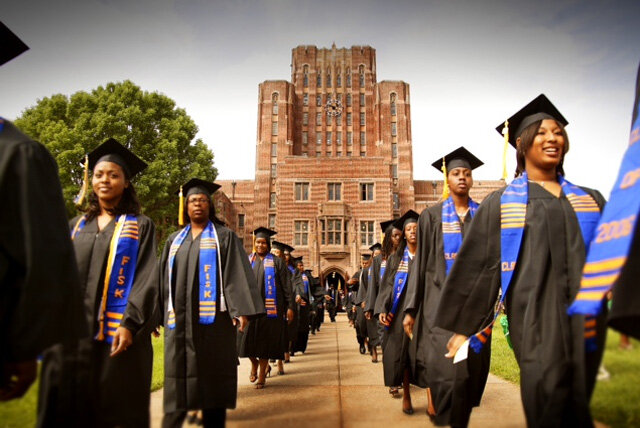Study Shows HBCUs Pay More to Take on Loans
New research published in the Journal of Financial Economics is showing that HBCU’s are actually paying considerably more to take on loans than their predominantly white institutions (PWIs) counterparts. Though one could point to the current wave of low college enrollment straining the money that flows through the system of higher education, the study chalks it up to institutional racism, plain and simple.
Right now when a college or university needs to invest in something major (think along the lines of a new dining hall, developing a new academic department, or acquiring more land) they will reach out to underwriters who buy massive multi million dollar bonds and sell chunks of those bonds to various investors with interest. Researchers found that on a $10 million bond, PWI’s are paying around 81 cents per dollar to the underwriter. HBCUs on the other hand are paying 14 percent more at around 92 cents per dollar.
“You might say it’s not that buyers of bonds are racist, it’s they think those bonds are more likely to default,” says economist and study co-author Bill Mayew. “It’s really hard in most settings to disentangle those indications. But in the bond market, we can measure that really well with the credit rating so we can dig into and isolate race effects.”
This phenomenon is even more pronounced at southern HBCUs in states like Alabama and Mississippi where racial tensions have always been much higher. The research found that on a $10 million bond, southern HBCUs are paying around 106 cents per $100 raised. According to economists who contributed the research, there are a lot of things to consider when chaliking a phenomena up to racial discrimination. First we have to note the difference between Statistical discrimination and taste-based discrimination. When it comes to higher ed bonds, the former is based on the statistical likelihood that one racial group is more or less likely to default on their loan. The latter happens when the arbiter of the bond has non-economic but rather, taste based biases for or against one group. Think along the lines of “I won’t loan to Mexican’s because the data say the default more” vs “ I won’t loan to Mexicans because I hate Mexicans.”
When it comes to HBCUs though, the researchers found that “identical [underwriter fee] differences are observed between HBCU and non-HBCUs with AAA ratings or when insured by the same company, even before the 2007–2009 financial crisis.” Moreover, the study breaks down how HBCU bonds are much harder to trade off in secondary markets where investors bid on bonds that have already been financed. They cost about 20 percent more. If a bond exceeds $50,000, HBCU’s pay around 60 percent in premiums. These forces that keep the bond on the market longer, thusly, lowering its value.
Overall, according to the study, disparity in bond markets will make it much harder for HBCU’s to thrive moving forward.
“Bond markets should be one of the cheapest forms of capital,” Mayew says. “It’s many individual investors, and schools should be able to raise lots of money. And maybe 25 years ago, an HBCU passed up renovating a dorm. These are the opportunity costs schools face.”

